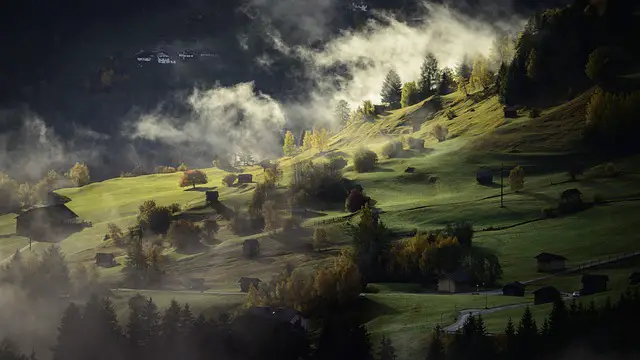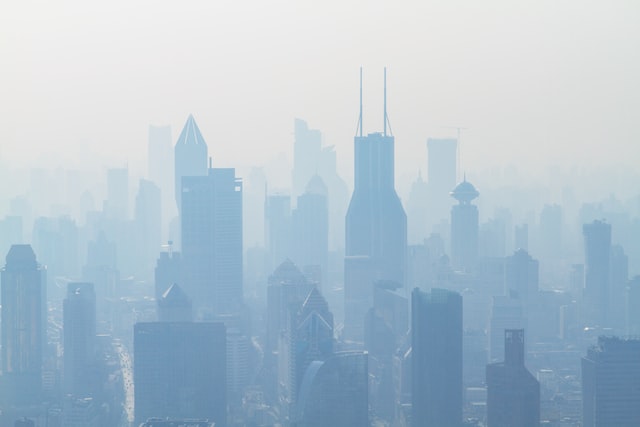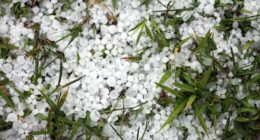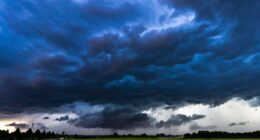fog and smog are both atmospheric dispersion of particles which can affect air quality. A fog consists of tiny water droplets in the atmosphere whereas smog consists of a mixture of pollutants from human activities such as vehicle emissions. It is important to understand these differences so we can better manage our environment and protect ourselves from hazardous air pollution levels caused by smog.
What is fog?
(Image by Jörg Peter from Pixabay )

Fog is a type of low-lying cloud that forms when the air near the ground cools to the point where it can no longer hold all of the water vapour in it. The water vapour condenses into tiny droplets of water, which float in the air and give fog its characteristic white or grey colour.
What is smog?
(Photo by Photoholgic on Unsplash )

Smog is a type of air pollution that is created when sunlight reacts with emissions from cars and factories. Smog can be harmful to your health and the environment. It is a mixture of pollutants that can include everything from car exhaust to industrial emissions. Unlike fog, which is natural and not harmful to humans, smog can be dangerous to breathe and has been linked to respiratory problems like asthma.
The difference between fog and smog
Fog is a type of low-lying cloud that forms when moist air cools and condenses. It typically occurs in areas with high humidity, such as near bodies of water. Smog, on the other hand, is a mixture of pollutants in the air that can be caused by human activity (such as emissions from factories) or natural events (such as forest fires). Because smog is usually found in urban areas, it can be more harmful to human health than fog.
To sum up, the main difference between fog and smog is that fog is a naturally-occurring phenomenon while smog is man-made.
Is smog a type of fog?
Many people often confuse fog with smog, but they are actually two different types of weather phenomena. Fog is a natural occurrence that happens when the air near the ground cools and condenses into water vapor. Smog, on the other hand, is a man-made pollution that forms when emissions from factories and cars react with sunlight and air to create a thick, murky haze.
What is the difference between fog and haze?
We all know what fog is: a cloud that forms at or near the ground. But what about haze? Haze is similar to fog, but there are some key differences. For one, haze is usually caused by atmospheric conditions (like high pressure) rather than weather conditions. Additionally, haze is composed of much smaller particles than fog, and it generally doesn’t reduce visibility as much as fog does.
Where is smog most common?
Smog is most commonly found in large cities with a lot of traffic and industrial activity. The air pollution from cars and factories mixes with the water vapor in the air to create smog.
How to protect yourself from smog
Smog can be harmful to your health and it is important to take steps to protect yourself from exposure. Some simple things you can do to reduce your exposure to smog include:
- Staying indoors when possible,
- Wearing a mask or respirator if you have to go outside,
- Avoiding strenuous outdoor activity,
- keeping car windows closed.
What is the difference between smog and fog give two examples?
Smog is a type of air pollution that is created when sunlight reacts with certain emissions in the atmosphere, like those from automobiles and factories. Fog, on the other hand, is a naturally occurring phenomenon that happens when water vapor condenses into tiny droplets in the air.

What are 2 main causes of smog?
There are a few different types of smog, but the two most common are Ground-level ozone smog and Particulate matter smog.
Ground-level ozone smog is created when emissions from things like factories and cars react with sunlight. This type of smog is especially harmful to people with respiratory problems.
Particulate matter smog is made up of tiny particles that come from things like wood-burning stoves and power plants. This type of smog can be dangerous for everyone, but it’s especially harmful to young children, the elderly, and people with heart or lung conditions.
What causes fog?
Fog is a type of precipitation that forms when water vapor in the air condenses into tiny droplets. There are many different types of fog, but the most common is Advection fog, which forms when warm air moves over a cold surface. The warm air picks up moisture from the surface and carries it into the atmosphere, where it eventually cools and condenses into fog.
Other types of fog include Radiation fog, which forms on clear nights when the ground cools quickly and radiates heat back into the atmosphere; Steam fog, which forms when cold air moves over warm water; and Ice fog, which forms when very cold air moves over a warmer surface (such as a lake).
Where are fogs most common?
In general, fogs are most common in areas with large bodies of water, such as coastal regions. This is because the water helps to cool the air, which can lead to the formation of fog. Additionally, fogs can often be seen in valleys or other low-lying areas, as the cooler air from these areas can also lead to fog formation.
What causes fog in the morning?
One of the most common types of fog is morning fog. Morning fog forms when the sun warms the ground, and the air near the ground starts to rise. As the air rises, it cools and the water vapor in the air condenses into tiny water droplets. The warmer air near the ground rises faster than the colder air above it, so the fog can be quite thick in some areas while other areas remain clear.
Why smog is harmful in winter?
When the temperature drops in winter, the air becomes drier and smog can become more concentrated. This can be harmful to your health, as smog is made up of pollutants that can irritate your lungs and cause respiratory problems.
Smog is especially harmful to those with asthma or other respiratory conditions, as it can trigger an asthma attack. It is also harmful to the elderly and young children, as their lungs are still developing. If you must be outdoors in smoggy conditions, make sure to wear a mask to protect your lungs.
How to prevent smog?
To prevent smog, avoid burning fossil fuels, use public transportation or bicycles whenever possible, and support laws and regulations that reduce air pollution. You can also plant trees, which help to improve air quality by absorbing pollutants.
What happens if you breathe in smog?
Breathing in smog can have short- and long-term health effects, according to the American Lung Association. In the short term, smog can irritate your lungs, causing coughing, wheezing and difficulty breathing. It can also aggravate chronic lung diseases such as asthma and bronchitis. In the long term, exposure to particle pollution from smog can lead to premature death from heart disease, stroke and lung cancer.
Does smog increase temperature?
While smog can be created by fog, the two terms are not interchangeable. Smog is a type of air pollution that is created when sunlight reacts with pollutants in the air, like car exhaust or industrial emissions. This reaction creates a haze that can lower visibility and make the air difficult to breathe. Smog can also trap heat near the ground, making it feel hotter than it actually is.
Featured Image By – Photo by Ricardo Gomez Angel on Unsplash








